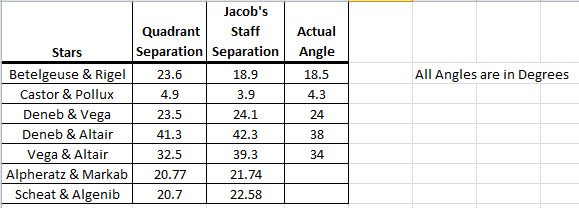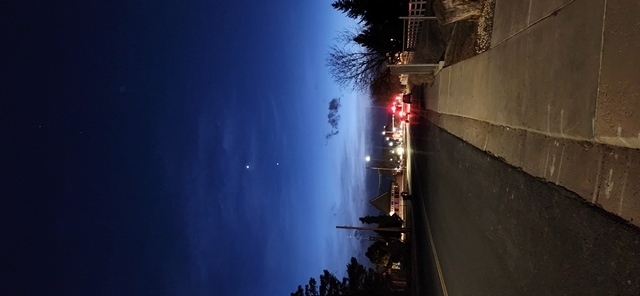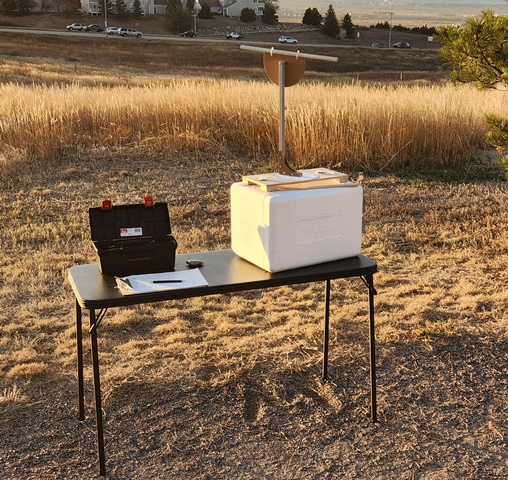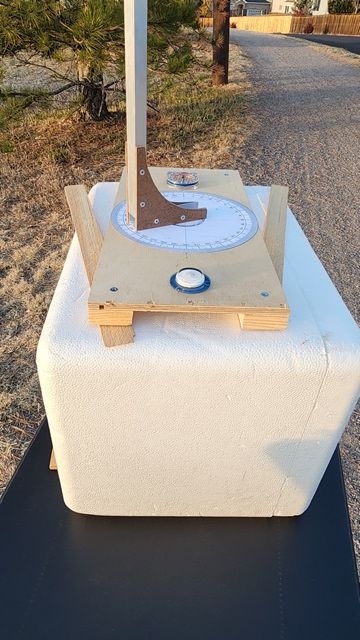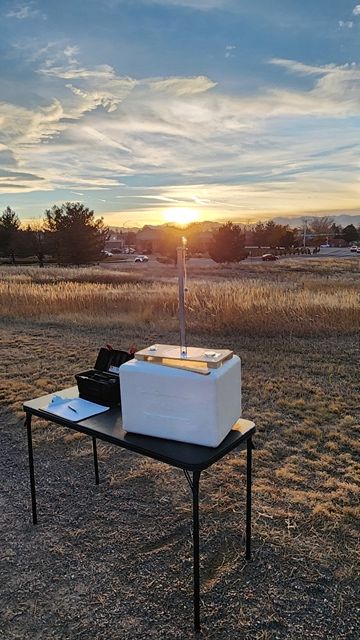Use your astrolabe, quadrant and cross-staff to measure (pick the tool which you think is best for the task):
1. Pick a star and measure how far it moves in an hour
2. Measure how far the moon moves versus a star you choose in an hour
3. Measure the angular diameter of the moon, (is your instrument precise enough to do this?)My Quadrant, Astrolabe, and pinky finger made very accurate measurements of the diameter of the moon.
The way I built my Jacob's Staff, I cannot measure an angle less than 2.2 degrees. I see now why in some pictures of Jacob's Staffs on the Internet, there are bigger ones and smaller ones. These can accomodiate measuring larger and smaller angles in the sky.
4. Measure the two diagonals of the Great Square, (is it really a square?)
No. I can see in the sky it is not an exact square and my angles neasured with my Quadrant and Jacob's Starr show this also.
5. Measure the azimuth of the rising full moon for three months in succession
6. Measure the altitude of the full moon one hour after it rises for three months in succession
7. the angle(s) between the following:
- Betelgeuse and Rigel
- Castor and Pollex
- The three stars in the Summer Triangle
- two planets at conjunctionItems 1, 2, 3, 5, & 6 Measurements
Items 4 & 7 Measurements
Using my Jacob's Staff:
Pegasus Square Measurements from Activity 9
For the above four measurements, I used my Jacob's Staff. I found my results surprisingly close to the actual values.
While making these measurements, I was positive I had the stars just at the edge of each marker before recording the measurements. I noticed the farther the distance is between the markers, the less reliable this tool was in making an accurate measurement of the separation of the stars. That can be seen in the measurements between Betelgeuse and Rigel, Deneb and Altair and Vega and Altair.
Using my Quadrant:
The comparison using my Jacob's Starr and my Quadrant shows the results are very similar by both instruments.
Two Planets at Conjunction:
I used my closed fist as 5 degrees and the separation between the two planets was about two-thirds of the distance across my knuckles.
When I started this program, Venus (upper) and Jupiter (lower) were in conjunction. This picture was taken minutes after making the Venus and Jupiter reading with my Jacob's Staff.
Measurements between Venus and the Setting Sun :
I used a compass, set to point to the celestial north, to align my quadrant's north-south line with the celestial north.
With the site tube on my quadrant, it was easy to align the quadrant with the setting sun. When I pointed the tube at the setting sun, I could project the image of the sun through the site tube onto my flat hand, positioned at the end of the tube. It was easy to fine align the site tube and get an accurate reading of where the sun set behind the mountains.
This is where I've been taking my readings of the setting sun and Venus. Highway US-287 is the road in the distance. This location is a half-mile from my home and gives me a wonderful view of the western horizon from Broomfield, Colorado.
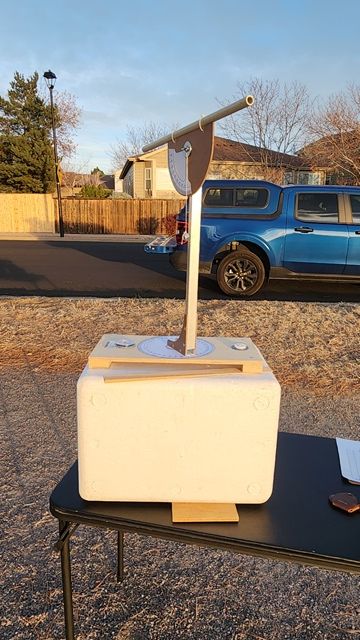
I used this styrofoam box to raise the quadrant to a nice observing height on top of the table. I have different thicknesses of plywood pieces I can use and wood shims to help level the quadrant deck.
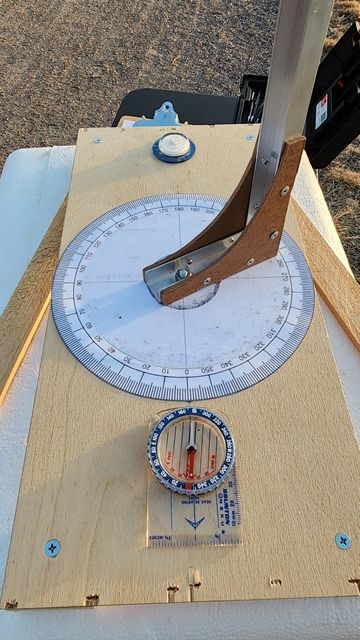
I used a compass aligned with celestial north to align the north end of the quadrant. I used a bubble level to level the quadrant. I've notice the closer the bubble is to center, the more accurate my quadrant readings are.
The sun has just set behind the mountain. This is when I took the reading of where the sun set. This direction is south of southwest.
The data:
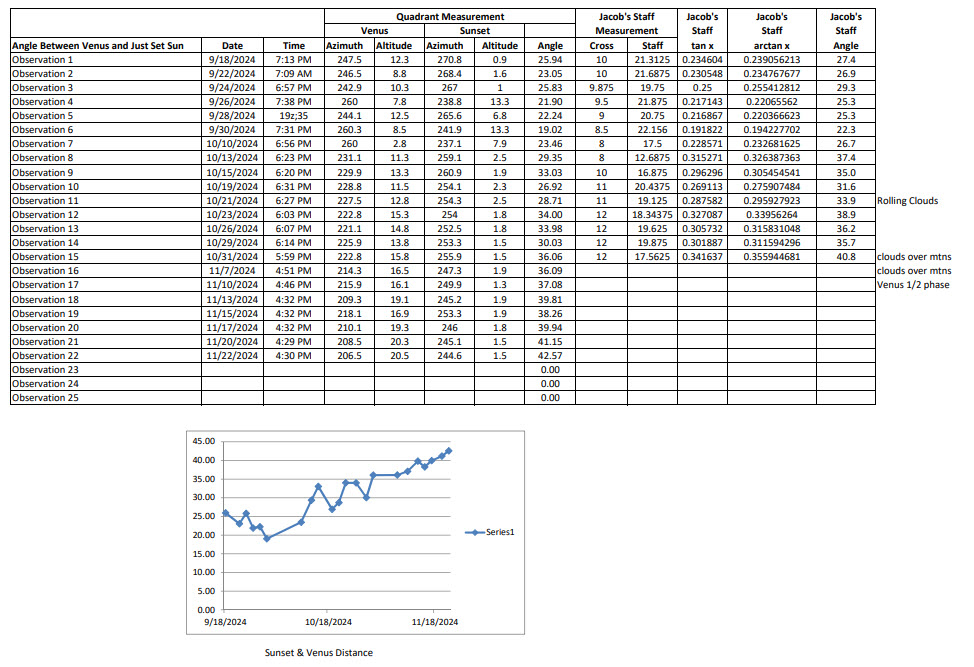
Many amateur astronomers use their fists (10 degrees), three fingers (5 degrees), and a pinky finger (1 degree) to estimated angular distances in the sky. Do you find that these earlier instruments give equal or better measures?
I was pleasently surprised that the my Astrolabe, Jacob's Staff, and Quadrant gave very accurate measurements of the sky. Much better accuracy than measuring with the fist or fingers.



